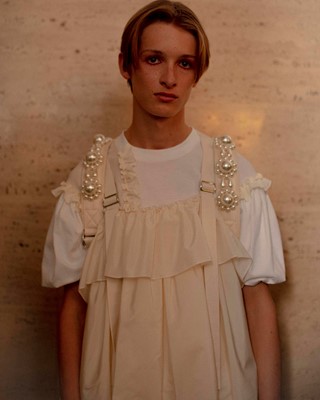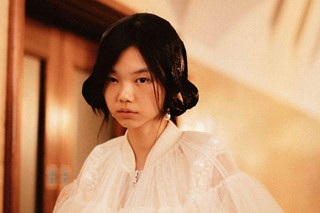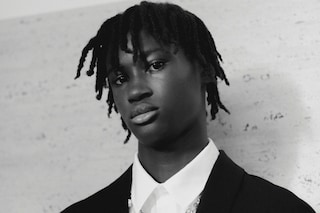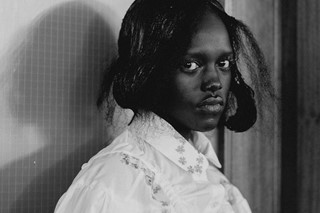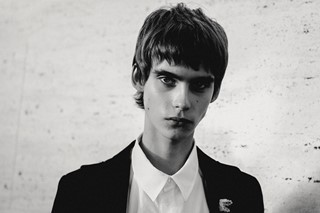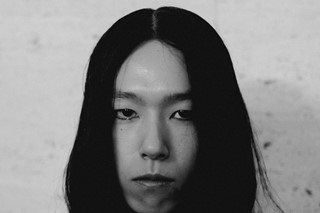On a crisp, sunny Sunday afternoon this London Fashion Week, hundreds of people filed into the grand marbled halls of the Old Bailey in central London, not to watch a criminal case unfold, but to witness Simone Rocha’s breathtaking Spring/Summer 2023 show. Like so many heritage sites in London, the stately edifice of the criminal court belies its dramatic 400-year history – one which has seen rowdy public hangings (until 1868), multiple rebuildings through the Great Fire of London and the Blitz, and some of the most notorious trials in Britain’s history. It was a fitting space for Rocha’s show this season, which was all about grasping for resilience and protection amid a world in flux; “a reaction to distress, digging deep and digging into the earth,” stated the poetic but brief show notes.
It’s been a year of firsts for the Irish designer, who turned her hand to curation at the start of 2022 with a blistering women-led exhibition at Lismore Castle which united artists like Louise Bourgeois, Roni Horn and Harley Weir. Excitingly, it’s also the first year Rocha has designed menswear, which she debuted alongside women’s looks on Sunday as one, unified collection. While previous seasons were inspired by the tales of folklore and literature, this collection wasn’t born from a story, but rather a feeling. In fact, it was about harnessing many emotions that, the designer tells AnOther, have been bubbling up inside of her this year; fragility, anger, and sensitivity – but also a ferocious strength in the face of turbulent times.
Unveiled to This Mortal Coil’s chilling Song To The Siren, the collection navigated these emotions through motifs found in nature and the idea of “protecting yourself against the elements”. Delicate tulles were embroidered with healing echinacea and chamomile blossom, sequinned daisy patterns shimmered on dresses and bombers, and quilted faille coats echoed the shapes of tulips. Meanwhile, contrasting forces of aggression and protection were expressed in midnight-black wools, wadded technical satins, and robust utilitarian straps which saw the notion of ‘harnessing’ become literal. Like her women, Rocha’s men were equal parts strong and vulnerable, too; with the traditions of masculine dress softened by romantic shirting, sparkling accents, and trousers fronted with cascading tulle. It was a powerful display – of raw emotion translated into clothes – the effect of which left the designer (and a few in the crowd) visibly misty-eyed when she popped into the sunlit hall for a few brief seconds at the show’s finale.
Here, in a conversation held a few days prior to the show, Rocha speaks about designing in times of trouble, her gentle approach to masculinity, and why each collection is like “giving a little bit of yourself away”.
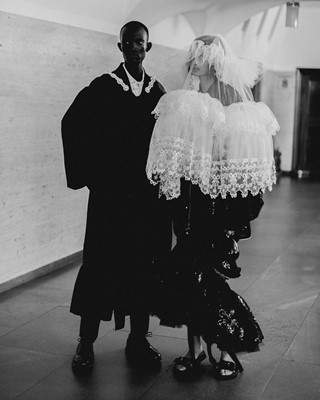
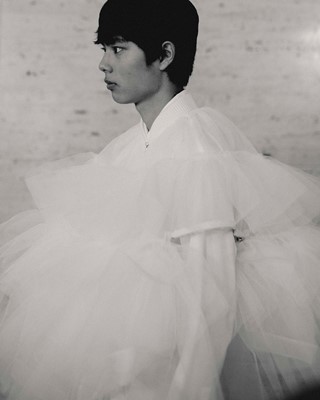
Orla Brennan: First off, I know you tend to stage your shows in beautiful historic buildings. Why are you showing in the Old Bailey?
Simone Rocha: There’s all this beautiful green marble, and there’s almost a coldness and a severity to the space that I felt really reflected the emotion behind the show. And especially [with] it being a building that signifies justice, I thought it would be a really great place to show this collection.
OB: Many of your collections find inspiration in folklore, myth and literature. Is this collection inspired by a story?
SR: There isn’t a narrative behind this one. The last collection was very much centred around a story, whereas this collection is really about harnessing a feeling. It’s [about] this idea of contrasts; fragility and masculinity, sensitivity, nature, anger. It’s all about harnessing all these different emotions that are boiling over inside of all of us at the moment, and kind of trying to see how I could translate that into clothes.
“It’s [about] this idea of contrasts; fragility and masculinity, sensitivity, nature, anger” – Simone Rocha
And the harness idea became a literal thing – we started strapping and harnessing dresses and the silhouettes, and distorting the fabrication by being almost rough with things that are naturally smooth. So yeah, it’s much more of an emotive collection than a storytelling collection this time.
OB: I love that idea of raw feeling translated into clothes, especially as your designs always have such an emotional pull to them. Was anything else on your mind this season?
SR: Honestly, I feel like everything has been so turbulent the last few years, and on many different levels. I was thinking about the reality of today, and channelling that into clothes. This one just kind of bubbled up from beneath and within actually.
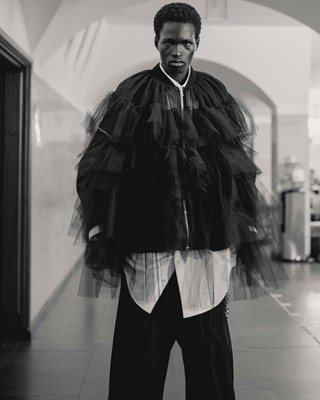
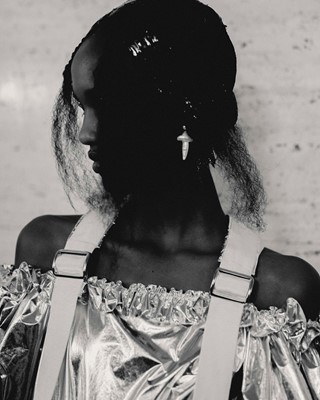
OB: I know what you mean, the last few years have been really overwhelming.
SR: Yeah, and on all different levels. I think my last collection Children of Lir was very much about escapism. This was actually much more challenging because it was almost like being self-reflective, you know? It feels much more exposing.
OB: I know that your design process is very tactile. What was the experience like designing this collection?
SR: What I loved this season was the development [process]. We were looking at this echinacea flower that we then embroidered onto wools and tulles; then we had clementine cotton, white cotton poplin, and we’ve blown up all these daisies and made them out of big sequined pallets. A lot of make-and-do-and-mend came into it. I wanted to contrast that with things that were quite strict, like tailoring and pinstripe wools, and then we also wanted to bring in a kind of a technical element, so there are technical satins that we have wadded and quilted to form a kind of layer of protection.
OB: I’d love to hear more about how nature has shaped the collection.
SR: It’s this idea of the earth, the soil, and the land – and a kind of struggle between man and nature. It came through in motifs, like the embellished middle of daisies or the rosewood taffeta, but then at the same time there’s a push and pull, and there’s a spike and a thorn as well. There’s a feeling of protecting yourself against the elements; so things are wadded, there are items like windbreakers and parachutes, and we used silver technical fabric that’s almost like a space blanket.
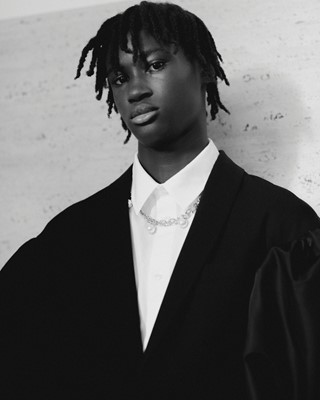
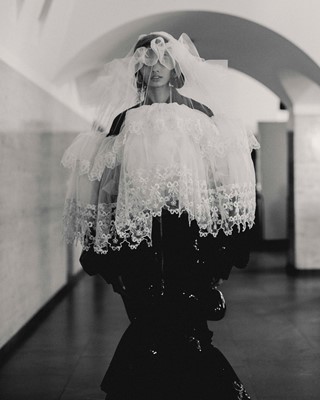
OB: What was it like designing menswear?
SR: It was amazing, actually. It’s something that we touched upon last season, where we wanted there to be a fluidity between the men’s and the women’s, and we had cast some men in the show, but it felt like the time to start really developing our menswear. Everything has been very complex. [We’ve approached] it with a sensitivity and a strength, while also looking at the codes and the history of the traditions, and kind of breaking them down and bringing them into my world. It’s been really stimulating.
OB: It’s interesting, because your designs explore the complex subject of femininity, and you’ve looked at womanhood in all its varying stages. With your menswear, are you presenting a more sensitive approach to masculinity?
SR: That’s exactly it; a sensitive approach to masculinity. And looking at masculinity – its beauty, and its role.
“They are a bit like self-portraits, because [with] every single show, you’re giving a little bit of yourself away” – Simone Rocha
OB: This year you also curated your exhibition girls girls girls – which celebrated woman artists, many of whom present subversive and visceral interpretations of femininity in their work. Did working on the exhibition influence you as a designer at all?
SR: Yes, I loved working on the exhibition. I [brought together] all these different artists, living and dead, that present a guise or a subversion of femininity today. Their work feels at the same time traditional and modern. I think the ethos of doing that really bled into the collection, and there are definitely works that I felt were really inspiring. And not just the works, but the women; the artists themselves. There’s always a connection to strong women.
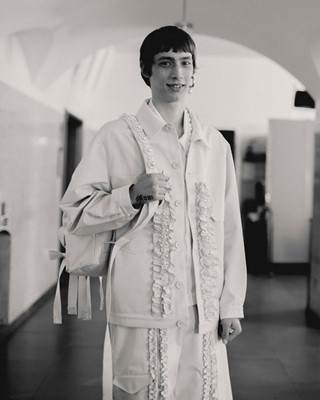
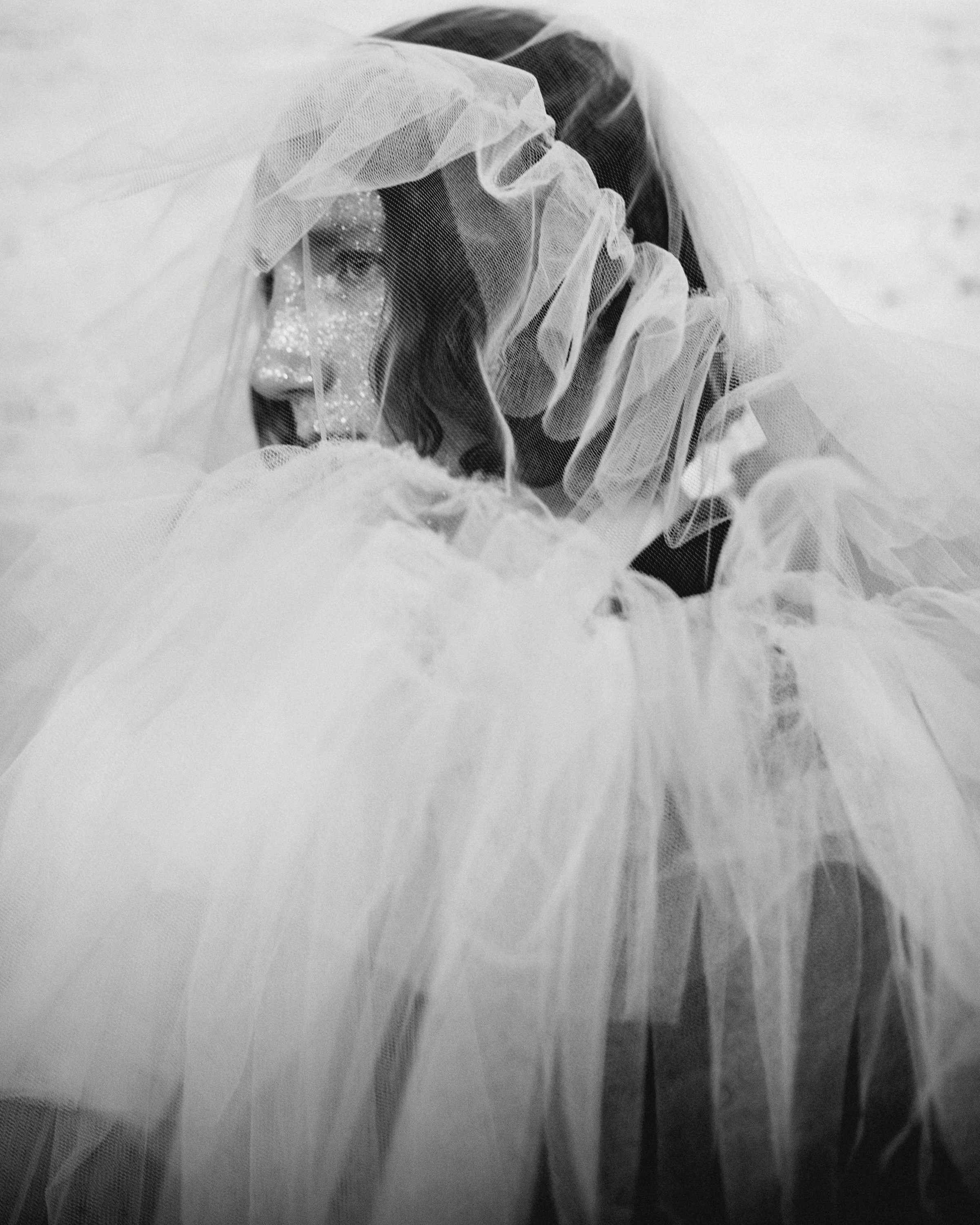
OB: You mentioned that many of the works in the exhibition were like self-portraits, even if they weren’t in a literal sense. Do you think your collections are like self-portraits in a way too?
SR: That’s such a good question. And yeah, I do, but when I’m in a collection it doesn’t feel like a self-portrait. It’s only when I go back that I can absolutely pinpoint myself at that time, and I can really see the influence of what was happening to me personally. In some collections it’s very obvious and in others it’s more subconscious. But they are a bit like self-portraits, because [with] every single show, you’re giving a little bit of yourself away.
OB: You obviously have a devoted following, and this is partly because your clothes bring out powerful emotions in people. What feelings do you think will be inspired by this collection, by either those who see it on Sunday or those who will wear it?
SR: Oh, I hope it makes people feel really, really strong. There’s almost like … I don’t want to say ‘aggression’, but [it has] a slightly aggressive feel. I do feel like it should inspire some strength, and I hope people feel powerful in it, actually.
